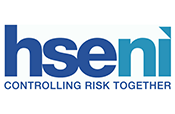Ensure lone workers' safety
Your legal responsibilities for lone workers' safety
Guide
You have the same health and safety responsibilities for lone workers as you do for other people who work for you.
Your first step should be to carry out a health and safety risk assessment. This highlights areas where further action may be needed to remove or minimise the chance of incidents occurring. See carry out a risk assessment for lone workers.
Risks to lone workers
Lone workers may be affected by many of the same health and safety risks as other workers. However, there are potential risks which are more likely to affect lone workers. It's important to:
- Ensure lone workers have no medical conditions which may make them unsuitable for the lone-working role they have been assigned.
- Be aware that some tasks may be too difficult or dangerous to be carried out by an unaccompanied worker.
- Provide some level of supervision, such as regular visits. See monitor lone workers' health and safety.
- Put contact procedures in place for emergencies so that the alarm can be raised and prompt medical attention provided if there is an accident.
- Make provision for lone workers - from fast-food delivery drivers to security personnel - who may be faced with a risk of violence.
- Check whether there are specific legal requirements. In some high-risk occupations such as diving, lone working is not allowed.
As with other workers, you must report major accidents, injuries and diseases involving lone workers.
- HSENI Helpline0800 032 0121
Also on this site
Developed with:
